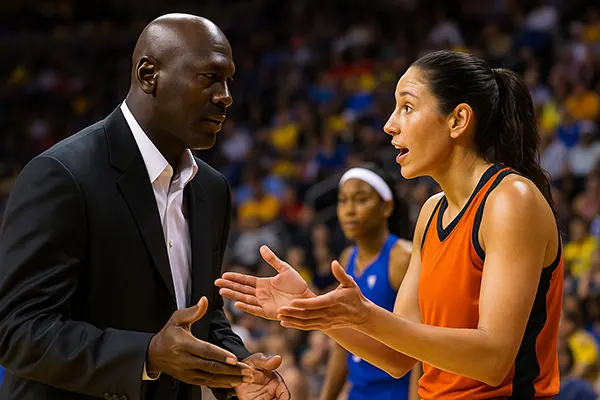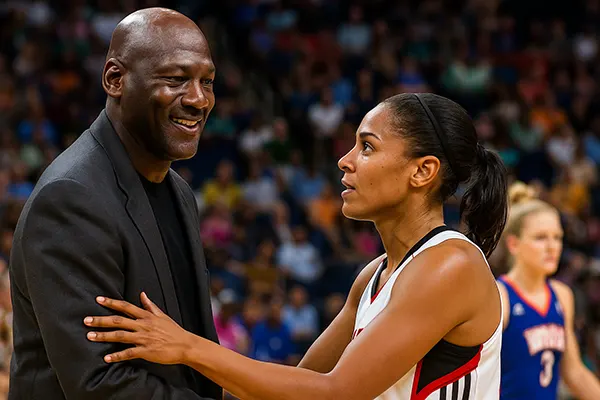
How Michael Jordan Shaped the Evolution of Women’s Basketball
Michael Jordan’s legacy is inseparable from the history of global basketball development, yet his influence on the women’s game often remains underestimated. His approach to training, mindset, public image, and commercial impact shaped how many female athletes see their careers today. The cultural shift he initiated within the sport helped women’s basketball gain more credibility, visibility, and inspiration across generations.
Jordan’s Cultural Influence on Women’s Athletic Identity
Throughout the 1990s and early 2000s, Jordan’s pursuit of excellence became a guiding example not only for male players but also for women who were breaking barriers in their own leagues. His insistence on discipline and uncompromising standards reinforced the idea that women’s basketball deserved the same level of seriousness and respect as the men’s game. Many female players began adopting his mentality as part of their own development.
The rise of the WNBA in 1996 coincided with Jordan’s peak global relevance, meaning women entering the professional scene grew up in an era defined by his performance philosophy. This contributed to a shift in how female athletes saw their potential: the path to international recognition became more visible and achievable. Several WNBA coaches noted that Jordan’s global cultural presence helped legitimise women’s basketball as a career for younger generations.
His influence also shaped how female athletes presented themselves in the public eye. Jordan’s combination of confidence, professionalism, and charisma created a model for athletes navigating media attention. Many WNBA stars have mentioned adopting similar approaches to interviews, leadership roles, and brand relationships.
Female Athletes Who Cite Jordan as a Key Inspiration
Sheryl Swoopes, often referred to as the “female Jordan,” has openly stated that she modelled her competitive approach after watching him dominate the NBA. Her signature basketball shoe with Nike, released in 1995, became possible partly because Jordan demonstrated how athlete-driven marketing could redefine public perception of the sport. Swoopes’ career remains a prime example of how Jordan’s achievements opened doors for women to gain serious commercial recognition.
Diana Taurasi has repeatedly described Jordan as the athlete who shaped her understanding of resilience and high-pressure performance. Her admiration began in childhood and continued into her professional life, where she applied his philosophies to her training routine. Taurasi’s leadership style, which blends intensity with strategic clarity, mirrors the traits she observed in Jordan’s career.
Candace Parker has emphasised that Jordan’s standards influenced how she approached her role as both a player and a public figure. Parker has spoken about the importance of maintaining authenticity while carrying the expectations placed on top athletes—an idea she attributes partly to observing Jordan’s career-long balance between competitiveness and public responsibility.
The Impact of Air Jordan on Women’s Fashion and Lifestyle
The Air Jordan brand has had significant influence on women’s sports fashion, particularly in redefining what athletic lifestyle clothing can represent. Although initially designed with a masculine aesthetic, the brand gradually became a unisex cultural symbol embraced by women worldwide. This shift paralleled the growth of women’s basketball as more female athletes adopted Air Jordan sneakers both for performance and everyday wear.
Women in the WNBA began appearing in Air Jordan models during the early 2000s, signalling a connection between the brand and female athletic identity. The embrace of Jordans by women extended beyond the court and into fashion, influencing streetwear trends and establishing a gender-neutral approach to basketball culture. By 2025, several Air Jordan releases include women’s-exclusive editions, illustrating a permanent shift in the brand’s direction.
The broader lifestyle impact is also visible in social media culture, where female athletes and content creators incorporate Air Jordan footwear into outfits that combine athletic performance with personal style. This evolution shows how Jordan’s legacy continues to define the intersection between sport, fashion, and cultural expression among women.
Women Leading the Air Jordan Movement
Nike’s decision to expand women’s Air Jordan lines was largely influenced by the increasing visibility of WNBA players wearing the brand. Athletes such as Maya Moore, who became the first female basketball player to sign with Jordan Brand, played critical roles in reframing the brand as inclusive. Her partnership proved that female athletes held strong commercial potential within basketball-focused fashion.
Today, players like Satou Sabally and Jordin Canada continue the trend by representing Jordan Brand at global events, merging athletic credibility with cultural influence. Their collaborations reinforce the image of women as essential participants in basketball culture, not secondary contributors. These athletes showcase how Jordan’s legacy directly supports the evolution of representation within the industry.
Jordan Brand’s growing investment in women’s basketball—through sponsorships, youth programmes, and product lines—signals how deeply Jordan’s influence now intertwines with the sport’s development. This represents a long-term cultural shift inspired by his impact on athletic standards and brand identity.

Jordan’s Legacy Through Coaching, Leadership, and Visibility in the WNBA
Female coaches and team leaders frequently reference Jordan’s approach to leadership as a foundational model. His ability to unify teams, demand accountability, and maintain focus during high-stakes moments serves as a framework for coaching strategies across the women’s game. These principles translate effectively into the WNBA, where team cohesion often plays a decisive role.
Jordan’s visibility also helped elevate media interest in women’s basketball. As broadcasters and journalists dedicated more coverage to basketball culture shaped by Jordan, attention gradually extended toward the WNBA. By 2025, this trend continues as Jordan Brand partnerships and cultural references help bridge gaps between men’s and women’s basketball audiences.
The long-term influence is evident in the professional pathways female athletes and coaches now pursue. Many cite Jordan’s career as proof that basketball can lead to broader opportunities: entrepreneurship, brand collaborations, philanthropic initiatives, and leadership roles beyond the court. This expanded vision strengthens the professional ecosystem of women’s basketball.
How Women Coaches Adopt Jordan’s Principles
Coaches such as Dawn Staley often describe integrating aspects of Jordan’s mentality into their programmes. Staley, known for her strategic precision and intensity, applies similar principles of preparation and mental strength to guide her players. Her coaching success demonstrates how Jordan’s competitive framework can translate effectively into women’s basketball education.
Becky Hammon, one of the most respected figures in the modern WNBA, has discussed how Jordan’s approach to teamwork influenced her coaching philosophy. Her emphasis on communication, accountability, and discipline reflects the lessons taken from observing Jordan’s leadership style throughout her playing years.
These coaching influences reinforce Jordan’s role not merely as a basketball icon but as an architect of a mentality that continues to shape women’s basketball at every level. His impact extends far beyond his career, embedding itself into the culture, professionalism, and long-term vision of the women’s game.
